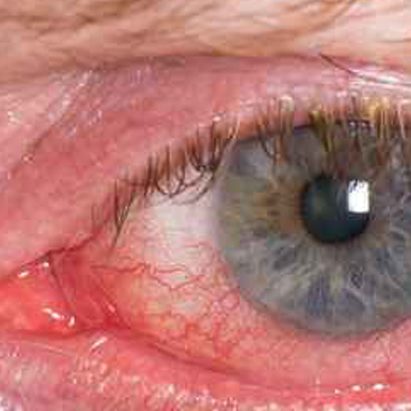PINK EYE
The majority of imitative or infectious inflammatory eye infections can be grouped under the concept of pink eye and are produced by conjunctivitis, which can be diagnosed and easily treated with suitable hygiene measures and localized pharmacological treatment. Although pink eye is often due to diseases of a benign nature, we must be vigilant and therefore be able to recognise in time those potentially serious conditions which could pose a threat to our eyesight.
What is pink eye ?
It is the reflection of the dilatation of the blood vessels in the conjunctiva, the membrane which covers the inside part of the eyelid and the most anterior part of the eye. It is characterized by a reddening of the anterior surface of the eye.
What causes it ?
It is principally caused by an inflammation or infection. Inflammation is usually produced by contact of the eye with irritants or allergens (smoke, pungent odors etc…), whereas infections are caused by viruses or bacteria which are usually highly contagious.
What are the symptoms ?
The patient feels as if there is a foreign body in the eye and there is watering of the eyes, conjunctival congestion and secretion. Generally, infectious conjunctivitis usually occurs within 8 days of having been exposed to people who are infected.
What is the treatment ?
Basically, the eyes should be bathed frequently with a sterile, saline solution and a wide spectrum local antibiotic should be applied. It is also fundamental to explain to the patient the contagious nature of this infection and therefore hygiene procedures, such as frequent hand washing, not sharing towels and using paper handkerchiefs should be made clear.
What other causes could trigger pink eye ?
There are several eye diseases which also produce a pink eye and can lead to blindness if they are not diagnosed and treated in time. This is especially important if there is pain, blurred vision or severe photophobia ( sensitivity to light ).These are symptoms which are not typically associated with a simple case of conjunctivitis and are indicators of a greater degree of severity, such as the presence of glaucoma, an ocular ulcer or inflammation of the interior of the eye, pathologies which may irreversibly affect our eyesight. In cases such as these, it is advisable that the patient sees their ophthalmologist urgently.

